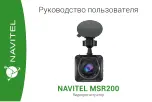
V1.02
Thom Hogan’s Complete Guide to the Nikon D300
Page 115
Model numbers in parentheses indicate models Nikon has tested
on a D300 and found compatible.
Nevertheless, there are still issues you need to understand if
you choose to use a Microdrive, even on compatible camera
models:
• Microdrives use rotating drives, thus they have some of
the same liabilities as a hard drive in a laptop or desktop
computer
. Theoretically, a standard CompactFlash card
can be dropped from up to about 10 feet without
damaging the device (and there are reported cases of
much larger drops being sustained and maintaining
operability); current Microdrives will generally fail with a
4 foot (1.2m) drop.
• Microdrives consume considerably more power than do
regular CompactFlash cards
(see “Battery Notes” on page
<102>). At rest the current Microdrives consume about
190mA, with peaks during writes of 300mA+. Solid-state
CompactFlash cards do not consume energy at rest.
• Microdrives generate heat during constant use
. Informally,
Nikon has stated that one reason they didn’t endorse
Microdrives with the original D1 was that the location of
the CompactFlash slot coincided with the “hot spot” in the
camera. While the D300 has shifted the positions of
components, heat build-up is still potentially an issue.
• Microdrives have a significantly narrower temperature
operating range than do regular CompactFlash cards
(the
specifications state approximately 41°F to 131°F (5°C to
55°C) for Microdrives versus –13°F to 167°F
(-25°C to 75°C) for solid-state memory). If you regularly
photograph in cold climates, keep some CompactFlash
cards handy.
• Microdrives don’t work well at high altitude.
Because
Microdrives rely upon a read/write head that is cushioned
by air flow and air pressure is lower at high altitudes,
there is a chance that a Microdrive will fail when used at
altitudes above ~9000’ (~3000m).
















































